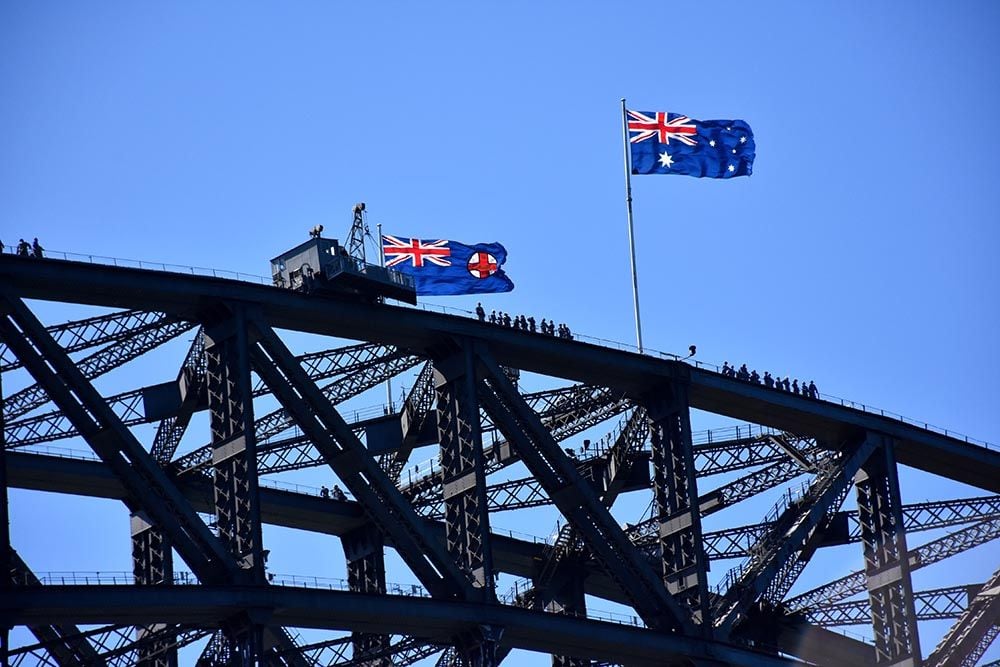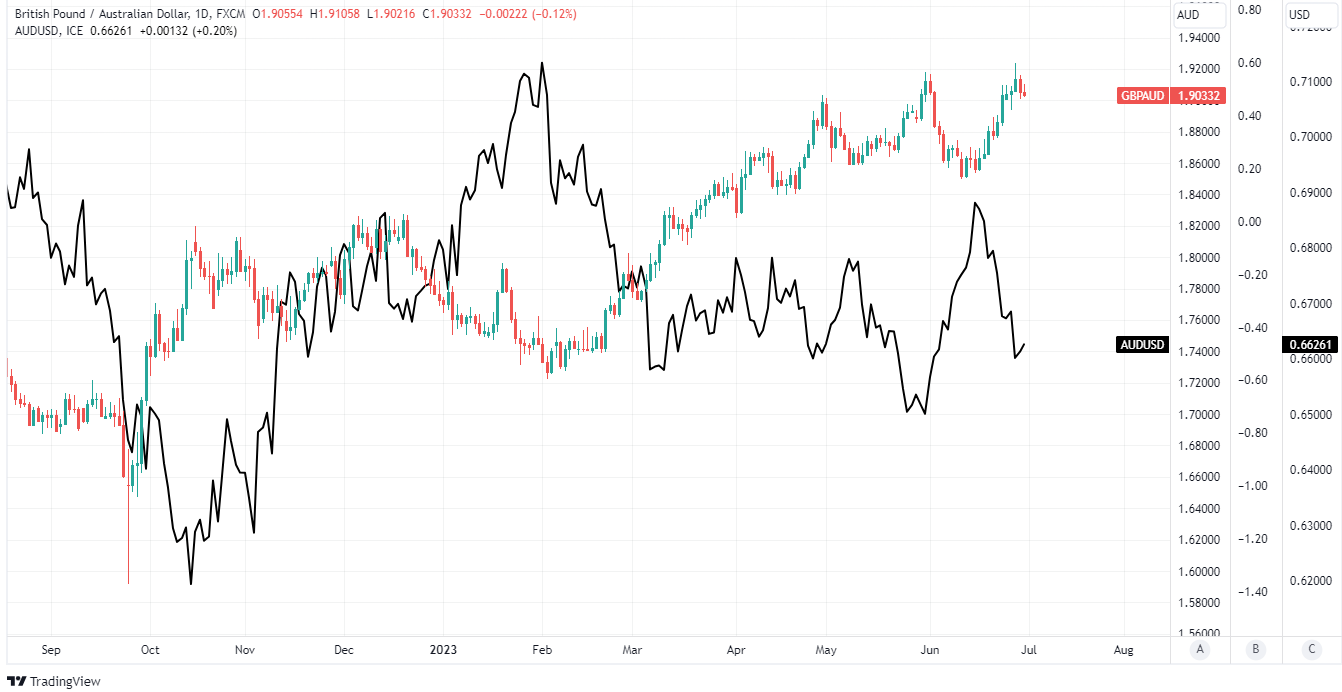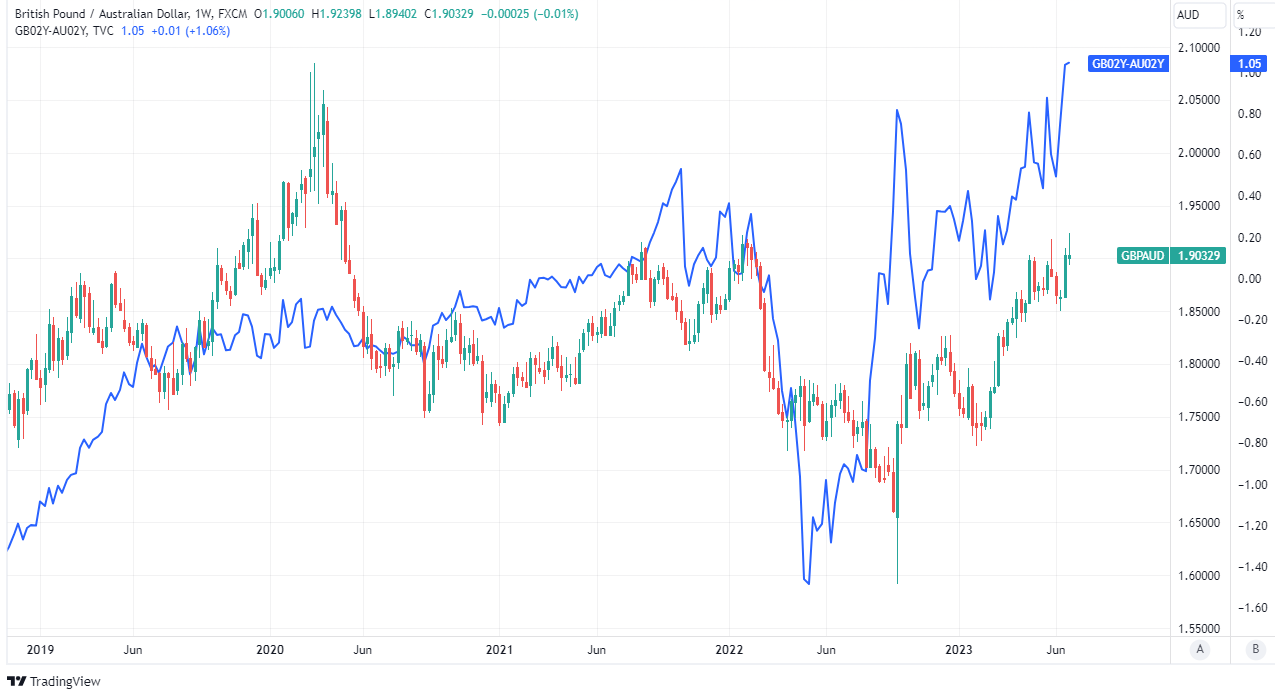Australian Dollar Risks Bowling Out GBP/AUD if RBA Surprises
"The strength in these currencies largely reflects the hawkishness of the respective central banks that caused a positive repricing of interest rate hikes" - CBA.

Image © Adobe Stock
The Pound to Australian Dollar exchange rate has faltered at its best levels for more than a year but Tuesday's Reserve Bank of Australia (RBA) interest rate decision is likely to be decisive of whether Sterling is merely being bogged down momentarily or bowled out altogether from its recent rally higher.
Australian Dollars were bought ahead of the weekend after the better tone of local economic data was echoed in North America and appeared to make up for losses arising previously on Wednesday when inflation was said to have fallen much more rapidly than expected last month.
"Much of the advance took place in London afternoon trading and some delayed reaction to earlier news on stimulus steps about to be announced in China appears to be a factor," says Derek Halpenny, head of research, global markets EMEA and international securities at MUFG.
"Data released today in China continued to suggest that stimulus is required. The manufacturing PMI increased marginally from 48.8 to 49.0 while the services PMI fell from 54.5 to 53.2," Halpenny writes in Friday commentary.
Stronger retail sales for the month of May could have helped the Australian Dollar on Thursday but Wednesday's inflation figures are what gives rise to the prospect of a hawkish surprise should the RBA's earlier concerns about price pressures in the services sector remain top of mind for the bank next Tuesday.
Above: Pound to Australian Dollar rate shown at daily intervals alongside AUD/USD.
The RBA raised its cash rate to 4.1% in June while citing concerns about the already lengthy period expected before inflation returns to its target and the risk of this being prolonged if inflation in the services sector becomes as big a problem in Australia as it has for some other central banks.
"We’re still seeing quite sticky services inflation, and that’s actually something that’s happening overseas as well; this isn’t just us. So we’ll be watching that," deputy governor Michele Bullock told reporters following a speech at the Ai Group last week.
"We’ll be watching the employment market. We’ll be watching consumption quite closely, and one of the big things that is occupying our minds is: how are households responding with their very large savings buffers that they have built up," she added.
Official figures showed Australian inflation falling back to 5.6% in May when out on Wednesday, from 6.8% previously, leading many economists and financial markets to anticipate the cash rate being left unchanged next Tuesday though Westpac economists are among those warning that inflation is currently stronger than it appears.
"With core inflation holding above 6%; the unemployment rate holding nearly 1 ppt below the NAIRU (RBA’s estimate) and the cash rate only around 1 ppt into contractionary territory (we see neutral around 3%) the cash rate will need to go higher," says Bill Evans, chief economist at Westpac.
Above: Pound to Australian Dollar rate shown at weekly intervals alongside spread or gap between 02- year UK and Australian government bond yields.
"A second pause, to gather further information, seems unnecessary and only risks the need for the cycle to extend even further into 2023 when the prospects for damage to the economy increase substantially," he adds after tipping the RBA to raise its cash rate to 4.35% next Tuesday.
Westpac economists said on Thursday that once prices of holiday travel packages and some other volatile items are set aside, the inflation picture is much less benign than the latest reading of the overall inflation rates would suggest, leading them to expect further increases in the cash rate sooner rather than later.
The Australian Dollar could benefit if the RBA takes the market by surprise next week and potentially enough to derail the rally in GBP/AUD, which is one of the Sterling pairs to have risen notably in recent weeks amid an aggressive increase in market-implied expectations for the Bank of England (BoE) Bank Rate.
"AUD and GBP are stronger than our forecasts. The strength in these currencies largely reflects the hawkishness of the respective central banks that caused a positive repricing of interest rate hikes," says Carol Kong, an economist and currency strategist at Commonwealth Bank of Australia.
"This policy repricing is particularly notable in the UK where the Bank rate is now expected to peak at 6.2% compared to around 4.5% at the start of the quarter. By contrast, JPY and CNH are weaker than we forecast because their central banks have been dovish about the inflation outlook," she adds.


